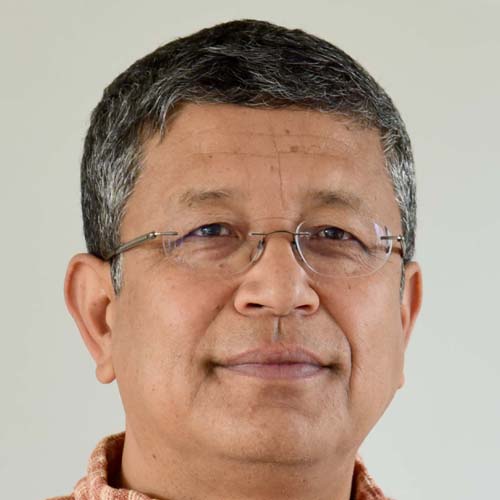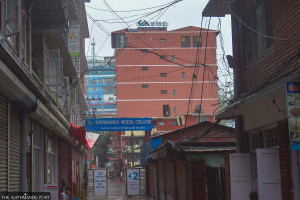Thu, Aug 14, 2025
Opinion
In the trenches of war
Nepal’s independence came with the blood of thousands of our countrymen spilt in far away places
bookmark
Deepak Thapa
Published at : February 13, 2014
This year is the centennial of what has been called the shot heard around the world—the June 1914 assassination of the heir to the Austrian throne in Sarajevo. The incident triggered a war that many believe was waiting to happen and dragged Europe, along with many other parts of the world, into the First World War. Perhaps among the first to remind us of this year’s significance was Oxford historian Margaret MacMillan, whose essay ‘The Rhyme of History: Lessons of the Great War’ has set off a little firestorm of its own, with its comparison of today’s United States and China with Great Britain and Germany of a hundred years ago.
The shot heard in Nepal
There are those who claim that neither of the two devastating wars of the last century deserves to be called world wars because, notwithstanding Japan’s role in the latter, both were primarily European wars that had roots in a history that had nothing to do with the rest of the world. Be that as it may, since my intention is not a deconstruction of the meaning of a ‘world war’, we seem to have forgotten the significance of World War I to our country. For, the shot heard around the world certainly rang loudly in the hills of Nepal as tens of thousands of our young men made their way down the mountainsides to be received by a willing British Indian army ready to ship them off to the killing fields of Western Europe and the Middle East.
There has never been a true accounting of how many Nepalis served in the British Army during the war but estimates range from 100,000 to 200,000. Kanchanmoy Mojumdar writes that a quarter of the entire male population of Nepal’s ‘martial’ groups was engaged in the war. The toll the far-away fighting took on Nepal was heavy, with a direct impact seen on the country’s demography itself. Compared to the 1911 census, the 1920 and 1930 censuses showed the population decreasing progressively. While the manner of the headcount at the time itself could be responsible for these results, it has long been surmised that the depopulation of vast swathes of the Nepali countryside of young males is likely to have been a major contributory factor. For, apart from the 20,000 believed to have lost their lives in the war, many WWI veterans did not return home and instead opted to settle in various parts of India in search of better opportunities. Mojumdar provides a figure of only a third of the 10,932 discharged in 1919 as having returned to Nepal.
British India and Rana Nepal
World War I was to prove the high noon of relations between British India and Rana Nepal. The latter’s main interest was an assured supply of Gurkha recruits and Prime Minister Chandra Shumsher went all out to oblige. As Pratyoush Onta writes, Chandra Shumsher “...put to work a whole new internal mobilisation scheme. Chandra ordered his district governors to ensure that the supply of ‘raw materials’ was up. Although it was emphasised that only volunteers were to be taken, there seems to have been considerable forced recruitment.”
Tony Gould has described families resisting “the near-forcible removal of their menfolk”. But even that was not enough to replenish the ranks of an army at war and where in the initial period, men from non- ‘martial’ groups, including Chhetris, were being rejected, by the end “Newars, Tamangs and other races not normally considered martial were enlisted and Nepal even emptied its gaols to feed the voracious war machine...”
Chandra Shumsher also sent more than 16,000 Nepali army troops on garrison duty in India to release British troops for the war. So involved was the country in the war effort considering that so many men were out in the trenches and deserts of the theatre of war, not to mention Chandra Shumsher himself, that following the Allied victory in November 1918, Nepal went all out in celebration, complete with a public holiday, a parade and the illumination of buildings.
After the war
The wily Chandra Shumsher soon asked for his reward and his main demand was that Nepal be treated differently than the princely states of India. As with his predecessors, he had long wanted to replace the Treaty of Sugauli with one that categorically spelt out Nepal’s sovereign status. With the demand coming so soon after the War and the tremendous support given by Nepal, the British could not ignore Chandra Shumsher outright. As a British official put it in 1919, besides the country’s value to maintain it as a friendly buffer state, Nepal had helped the British a number of times—at the time of the 1857 Indian Mutiny, the 1904 Tibet expedition and “above all in the present war...without Nepalese goodwill we should lose beyond the possibility of replacing the flower of the Indian army”.
Four years later, the 1923 Treaty of Friendship between Great Britain and Nepal was signed, which, in Asad Husain’s words, “removed the last restrictions on Nepal’s independence”. Contact was made with the League of Nations and other foreign countries. Relations between the two countries, or rather the British and the Ranas, remained as warm as ever and even led to the establishment of a Nepali mission in London in 1934. But the guarantee of independence that came with the 1923 treaty was written in large part with the blood of thousands of our countrymen spilt in places far away from home, in France, Belgium, Egypt, Iraq and Palestine.
In his article written 20 years ago, Onta points out: “The Gurkhas who arrived at the recruitment centres of the Raj mainly came from four ethnic groups of Nepal: Magar, Gurung, Rai and Limbu. During the early years of the twentieth century, none of these groups were represented in Kathmandu’s intellectual class [which]...responded to the Gurkha participation in the First World War by cheering from a distance, memorialising mass death as if it were blood sacrifice to add glory to the motherland. They sanitised the suffering and death of the Gurkha soldier as a moment of national celebration. The soldier’s pain in the battlefield was legitimised as part of one’s necessarily sacred duty to the Nepali nation.” He adds tellingly: “Of course, no one asked why it was always other Nepalis who had to die to enhance the name of their motherland.”
A full hundred years later, the composition of Nepal’s intellectual class is pretty the same. That perhaps explains why when a British minister came visiting recently the focus was only on the bicentennial-long ties between Nepal and the United Kingdom, ie, dating relations from the Treaty of Sugauli. There seems to be general amnesia about the more recent, and perhaps more significant, upheaval in which both countries suffered greatly, ie, World War I, and which had the fortunate result of our joining the ranks of independent nations. The least we can do in memory of those thousands who have made, to paraphrase Rupert Brooke’s memorable words, “some corner of a foreign field that is for ever Nepal” is remember their ultimate sacrifice when the time comes.
Editor's Picks
Students say they are abused under guise of discipline at a Kathmandu school
Exploring ‘forbidden’ hours: Women assert access to public space with midnight walks
Nepali women being sent to Hong Kong on fake Indian IDs
Bitter husband-wife rift throws Nagarik Unmukti Party into chaos
Drought-hit farmers die hooking wires to mains for irrigation
E-PAPER | August 14, 2025
×




 22.34°C Kathmandu
22.34°C Kathmandu












